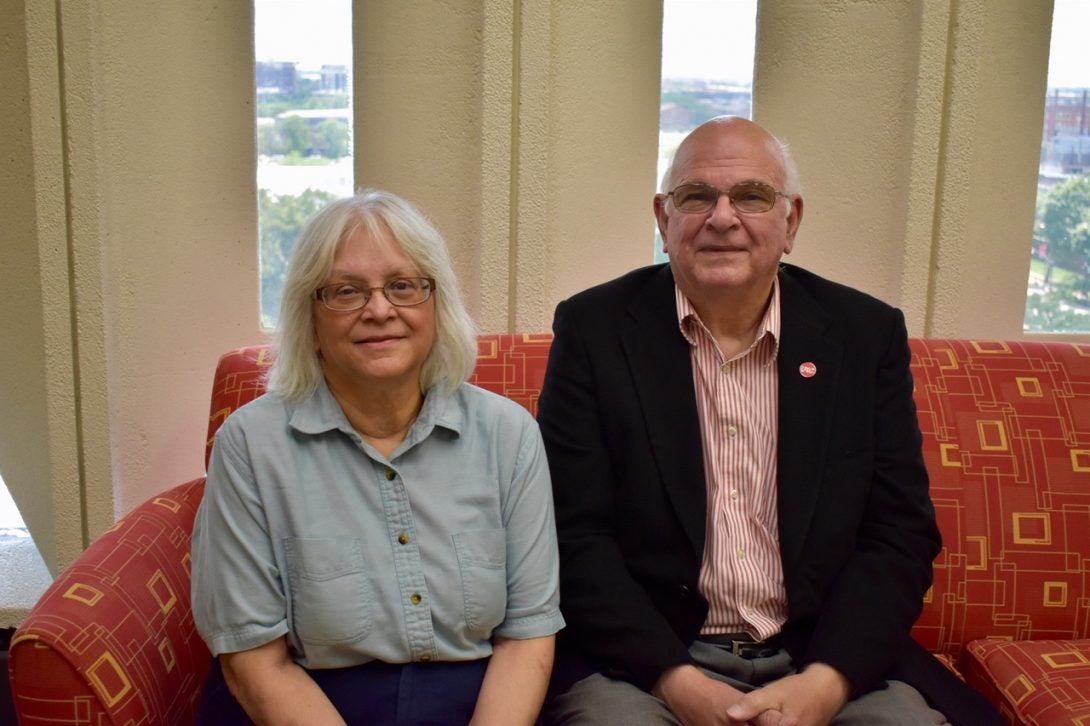ECE Distinguished Professors Dutta, Stroscio work with U.S. Army to improve diamond-based transistors
ECE Distinguished Professors Dutta, Stroscio work with U.S. Army to improve diamond-based transistors Heading link

UIC scientists are working to improve diamond-based transistors, which will enable higher-power, higher-frequency communications.
Transistors are key components in almost all modern electronics, amplifying currents and switching currents on and off. Currently, most transistors are made of silicon, due to its abundance and relatively low cost. Those found in cellphones and satellites are gallium arsenide, a material that allows electrons to race through its structure far faster than silicon. Diamond, which is one of the hardest materials on earth, has long been considered an insulator due to its very wide band gap, rather than a candidate as a transistor.
While more electrons moving quickly is good for transmission speed, with speed comes heat. Devices that must operate in harsh environments, or are used in some commercial applications or power functions, often run hot and consume a lot of power. Diamond maintains its functionality working at significantly higher temperatures and at higher frequencies than current transistors.
To make diamond a semiconductor, some of the diamond’s carbon atoms must be replaced with a different material that will either donate electrons or accept electrons. Once the surface of the diamond is doped with other materials the charge carrier can be generated.
Distinguished Professor Mitra Dutta, and Richard and Loan Hill & Distinguished Professor Michael Stroscio, both of the Electrical and Computer Engineering Department, signed a three-year cooperative agreement in March for just under $400,000 with the U.S. Army Research Lab (ARL) on diamond transistors for high powered, high frequency applications. The project, “Phononic Effects in Diamond Electronics,” will run three years.
The partnership, with scientists in the Sensors and Electron Devices Laboratory at the ARL, was established to integrate diamond as a material system used in transistor fabrication, which will lead to higher switching speeds and higher power applications.
They will explore novel ways to tailor the phonons or lattice vibrations of transistor structure to reduce the electron scattering, which leads to the decrease in electrical conductivity.
“So far what people have realized is nowhere near the speeds that people have been expecting theoretically, so we want to see what is going on,” Dutta said. “Our part of the work is to look at the theoretical aspect of the scattering of these carriers and see why the mobilities aren’t as high. We are also working closely with them to help fabricate the diamond transistors.”
Dutta and Stroscio will examine samples of ARL-fabricated Diamond Field Effect Transistors for properties such as surface roughness and defects, and look at the role of interface phonon scattering, using electron microscopy and Raman spectroscopy as well as investigate the various fabrication steps to look for insights.
UIC will also be working with Argonne National Laboratory on this project.
“The military is interested because of its promise of high frequency and high power,” Dutta said. “With any new technologies we need to be ahead of the curve.”
This project is one of a series of projects UIC College of Engineering is working on with the Army Research Lab.
Duo receives additional funding for phonon research from Air Force
In June, Dutta and Stroscio received a $563,000 grant for another project examining phonon effects in different novel layered materials from the Air Force Office of Scientific Research. The three-year grant is for “Electronic Properties and Interactions in Emerging Electronic Systems: Fundamentals of Phonon Effects,” which will provide scaling laws describing the fundamental electronic properties of these emerging electronic materials where the properties will change as different materials are interfaced. Additional novel devices of 2D layers sandwiched between 3D layers will also be investigated.